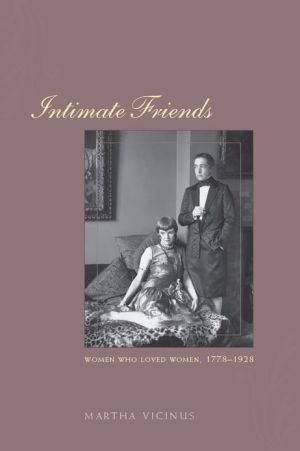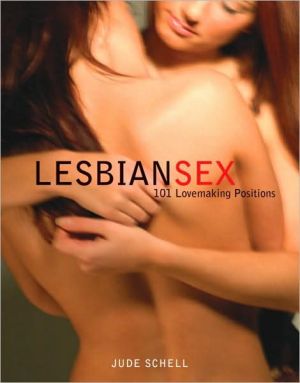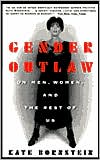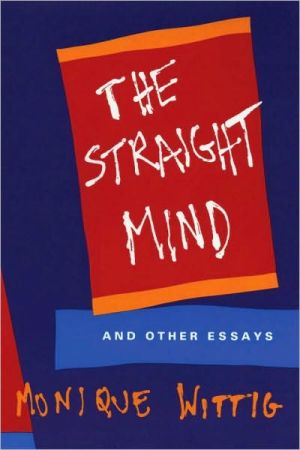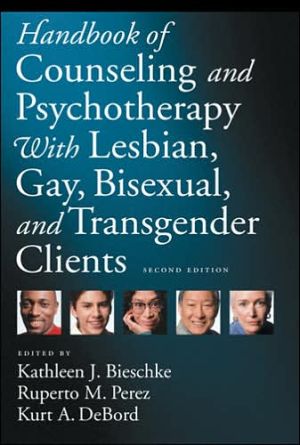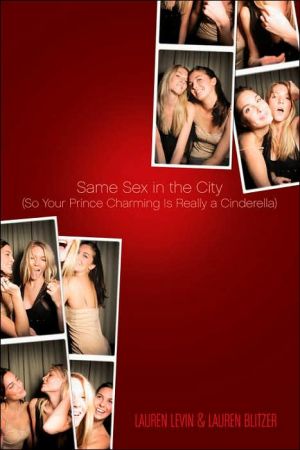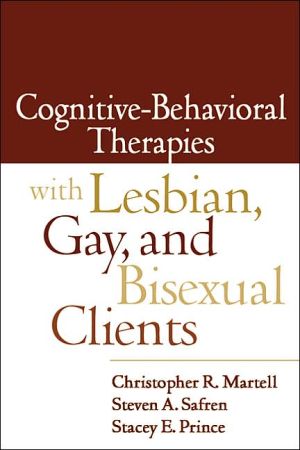Intimate Friends: Women Who Loved Women, 1778-1928
"Intimate Women offers a look at the erotic friendships of educated English and American women over a 150-year period, culminating in the 1928 publication of The Well of Loneliness, Radclyffe Hall's scandalous novel of lesbian love. Martha Vicinus explores all-female communities, husband-wife couples, liaisons between younger and older women, female rakes, and mother-daughter affection. Women, she reveals, drew upon a rich religious vocabulary to describe elusive and complex erotic feelings."...
Search in google:
Intimate Friends offers a fascinating look at the erotic friendships of educated English and American women over a 150-year period, culminating in the 1928 publication of The Well of Loneliness, Radclyffe Hall's scandalous novel of lesbian love. Martha Vicinus explores all-female communities, husband-wife couples, liaisons between younger and older women, female rakes, and mother-daughter affection. Women, she reveals, drew upon a rich religious vocabulary to describe elusive and complex erotic feelings.Vicinus also considers the nineteenth-century roots of such contemporary issues as homosexual self-hatred, female masculinity, and sadomasochistic desire. Drawing upon diaries, letters, and other archival sources, she brings to life a variety of well known and historically less recognized women, ranging from the predatory Ann Lister, who documented her sexual activities in code; to Mary Benson, the wife of the Archbishop of Canterbury; to the coterie of wealthy Anglo-American lesbians living in Paris.In vivid and colorful prose, Intimate Friends offers a remarkable picture of women navigating the uncharted territory of same-sex desire. Library Journal Denied higher education and means of self-support, how did passionately attached women live out their relationships? Vicinus (English, women's studies & history, Univ. of Michigan) describes couples who reconfigured themselves using familial labels, couples who considered themselves husbands and wives, communities of expatriate British and Americans, and women who refused to identify as such. She considers how such relationships fared in the male worlds of law (disastrously) and religion (in one case destroying and another case enabling the relationship). Vicinus is challenged not only by her subjects' aversion to labels but also by the destruction of their personal papers by families and heirs. Refusing a progress narrative, she nevertheless chronicles how intimate female friendship moved from being socially sanctioned (but unexamined) to being scrutinized and mischaracterized by the medical profession in the early 1900s, as exemplified by the treatment of Radclyffe Hall. Free of academic jargon, this accessible work deals with several women whose lives have been extensively documented and introduces a handful of lesser-known Victorian writers. Recommended for collections specializing in women's history and gay and lesbian studies. Ina Rimpau, Newark P.L., NJ Copyright 2004 Reed Business Information.
Intimate Friends \ WOMEN WHO LOVED WOMEN, 1778-1928 \ \ By MARTHA VICINUS \ THE UNIVERSITY OF CHICAGO PRESS \ Copyright © 2004 The University of Chicago\ All right reserved.\ ISBN: 978-0-226-85563-9 \ \ \ \ \ Chapter One \ "A Scheme of Romantic Friendship" \ LOVE AND SAME-SEX MARRIAGE\ In the late eighteenth century, a dowry-less orphan and an aging youngest daughter startled their respective families by declaring their determination to live together. Sarah Ponsonby came from an impoverished wing of a distinguished Irish Protestant family. Only her father's cousin, Lady Betty Fownes, took an interest in her, and sent the thirteen-year-old orphan to Miss Parke's School in Kilkenny. During her five years in boarding school, she was befriended by Eleanor Butler, sixteen years older than she. The shy, lonely adolescent opened her heart to the brilliant, French-educated Roman Catholic. The older woman was bored and sensitive about remaining an unmarried burden on her family. They exchanged books, wrote frequently, and discussed the current fashion for rural simplicity as the epitome of spiritual refinement.\ After Ponsonby returned to her relatives, the two continued secretly to correspond. Ponsonby adored her adoptive mother, Lady Betty, but to her dismay, Sir William Fownes, with an eye to the possible death of his wife, began to woo her. Caught in an impossible situation, she wrote anxious letters to Butler and other friends. At about the same time, Butler's mother became insistent that she join a French convent; her satirical, overeducated daughter should return to the community where she had been so happily educated twenty years earlier. The friends' letters took on a new urgency: they must run away together to that idealized rural retreat. On the cold rainy night of 30 March 1778, the two women, now twenty-three and thirty-nine, disguised themselves as men and fled to Waterford, planning an escape to England. They were caught and returned to their separate homes in disgrace. Sarah Ponsonby hovered near pneumonia, anxious for news about her beloved Eleanor, who had been locked up by her family in a final effort to persuade her to enter a convent. The horrified families initially consoled themselves. As Lady Betty's daughter wrote, the conduct of the pair, "though it has an appearance of imprudence, is I am sure void of serious impropriety. There were no gentlemen concerned, nor does it appear to be anything more than a scheme of Romantic Friendship."\ During the desperate days when both families tried to persuade the two women to follow a more moderate path, friends and relatives spoke frankly about a passion that they could not quite name. Although precise words might fail, something was clearly wrong with this extreme form of friendship. Lady Betty kept circling the question of why the gentle and retiring Ponsonby would commit herself to her friend. "'I hear they say these two friends must not live together,' she wrote, 'I cant help thinking as they do.'" Her more worldly ally Lucy Goddard felt obliged to speak plainly to the seemingly deluded Ponsonby-"to discharge my conscience of the duty I owed her as a friend by letting her know my opinion of Miss Butler and the certainty I had they never would agree living together. I spoke of her with harshness and freedom, said she had a debauch'd mind, no ingredients of friendship that ought to be founded on Virtue." Contemporaries found Butler too blunt, too masculine in her style of speech, dress, and general appearance. Perhaps she had also been too masculine in her behavior, too openly seizing the role of husband? Gender inversion awoke suspicions of Sapphism, or at least of something foreign. "Debauch'd" was the word used to describe Marie Antoinette and her women friends; it also implies a sophisticated knowledge of sexual behavior, of vice, not virtue, on the part of Lucy Goddard. But Ponsonby and Butler still insisted on living together. Fearful of publicity and probably glad to be rid of them, both families soon agreed to provide financial help. This time the two aristocratic ladies traveled modestly but correctly to rural Wales, where they settled into their role of being "the Ladies of Llangollen," the model Romantic Friendship.\ For over a century their experience of family disapproval, a dangerous escape, and then rural bliss on a narrow income was the paradigmatic narrative of intimate female friendship. Sarah Ponsonby and Lady Eleanor Butler became almost mythic figures who had courageously challenged patriarchal authority in order to live independent lives. Theirs was a triumphal plot, for personal happiness overcame social ostracism and led to fame and widespread acceptance. Single women revered a romanticized version of the Ladies; under the right circumstances, they too could live with a beloved friend in blessed retreat from social and familial responsibilities. But why did "they" say that the gentle Ponsonby should not live with the witty Butler? What was it that Lady Betty Fownes could not name to her own satisfaction? This chapter looks not at the rise of sentimentality and romantic friendships-these were both established during the eighteenth century-but rather at the rituals, private and public, of romantic friends who celebrated a commitment to each other. It also considers how far a couple could go in presuming marital privileges, in order to address the question of how "they," gossiping friends and neighbors, defined same-sex erotic love.\ THE RITUALS OF FRIENDSHIP\ Romantic friends who fell in love, courted, and then confirmed their love with declarations of marriage adapted familiar heterosexual rituals. A same-sex marriage could look remarkably similar to the ideal companionate heterosexual marriage, reflecting many of its characteristics, including a more powerful, intellectual, "masculine" partner and a milder, more feminine, soul mate. Judith Butler has vigorously repudiated the idea that homosexual practices are a pale imitation of the heterosexual. She is especially opposed to the notion that butch/femme role-playing mimics the husband/wife of heterosexual marriage. I must disagree. Lesbians do imitate the rituals and behaviors of the dominant culture-how can they not, surrounded as they are by powerful normative codes? Moreover, established religious ceremonies have traditionally provided the most meaningful and effective way to honor earthly love. Women who wished to celebrate their commitment to another woman borrowed from these traditional religious rites. They also carefully distinguished between friendship and love; ideally, their "marriage" combined reason and passion without the liabilities of heterosexual marriage.\ Romantic friendships began as a series of steps leading to emotional intimacy. As in heterosexual love, these included gifts, letters, and long private conversations. Vernon Lee and Mary Robinson exchanged long letters about how to dedicate their books to each other without offending their male patrons. Elma Stewart never counted the cost in time and labor for the numerous hand-carved wooden objects she gave George Eliot as tokens of her adoration. Rings, necklaces, and lockets with a strand of hair or a picture were the preferred gifts, although Bibles, prayer books, and silver crosses were popular among the religious. Anne Lister gave her pious friend Ann Walker a gilt-edged prayer book. Mary Benson, the wife of a clergyman, gave her lover "Chat" a copy of the Book of Common Prayer, entreating her to keep it by her bedside at all times; she also wrote special letters to Chat at Easter and Christmas. They had first exchanged jewelry, photographs, and nicknames; each gift involved detailed letters of explanation and pledges of love. Because these gestures were so conventional they did not necessarily indicate an exclusive interest, and so could serve as a cover for deeper intimacies.\ Lady Betty, puzzling over Ponsonby's uncharacteristic obduracy, recognized one key element in women's friendships when she sighed, "Poor Soul, if she had not been so fond of her pen, so much would not have happened." A special friendship almost seemed to demand secret notes, along with the lending of books and the sharing of favorite poems, passages, and authors. Young men also participated in this ritualized sharing of knowledge, but for women it took on an added meaning, for few families encouraged learning in their daughters. The written word, whether one's own or that of a current favorite author, became an emissary, a means of indirectly declaring one's love, and then of explaining a whole range of new, tumultuous feelings. Intellectual curiosity stood in for sexual curiosity: "we two" want to learn more about a favorite author or artist, and in the process of doing so, we will learn more about our feelings for each other. A love of learning strengthened a friendship, drawing two women into a world marked by serious spiritual and intellectual concerns, rather than the frivolity of heterosexual courtship or the dull routine of family duties. The intimate companionship between Butler and Ponsonby began with and then was sustained over a lifetime by their shared intellectual interests.\ Secrecy often signaled a change in feeling. Parents, suspicious of a daughter's undue interest in another woman, might forbid meeting or corresponding. If they were readers they knew that clandestine correspondence and secret meetings (preferably at night) were virtual clichés in fiction. Amanda Vickery suggests that sometimes a young woman purposely created obstacles for a man in order to create opportunities for secrecy and assignations; a prolonged courtship heightened the thrill of temporary power. A woman in love with another woman drew delicious pleasure from the same kind of practices. A close friend of Butler and Ponsonby, the poet Anna Seward, frequently wrote about her various romances with other women. For Seward, unable to leave her father, such entanglements increased her importance in her own eyes and those of her friends. When Elizabeth Cornwallis's father forbade romantic friendships, she and Seward still continued to correspond. After a brief meeting Seward deliciously confessed, "Our interview was stolen and dangerous." She half-lamented on another occasion, "It is hard that our attachment to each other should be a secret ... the disclosure of which must involve as much distress and misery to both of us as if we were of a different sex, and our intercourse guilty." Mr. Cornwallis, however, had confidently defined their intercourse as guilty, perhaps because it seemed too passionate, too all-encompassing, or perhaps because it took his daughter's attention away from him.\ After the initial confession of love, friends fell into planning, combining fantasies of running away together with a playful bandying of nicknames. Some women enjoyed calling each other masculine or androgynous names, perhaps as an escape from patriarchal authority and its claim to the naming of women in marriage. Lister was called Fred by her lover. Among her friends and lovers, Isabella Norcliffe was the androgynous Tib; and Miss Pickford was shortened to Pic, but some knew her as Frank. Mary Benson, the wife of the Archbishop of Canterbury, was called Ben. Katharine Bradley and Edith Cooper, the aesthetic fin-de-siècle aunt and niece who wrote under the pen name Michael Field, were Michael and Henry, respectively; they engaged in elaborate play with pronouns and pet names for themselves and their friends. Radclyffe Hall was known to all her friends as John. The writer Vernon Lee and the poet Mary Robinson engaged in an orgy of renaming. Mary was Molly, Mollikins, Molchino, Mouse, and Mowk, as well as Princess Quesara. Vernon was Vernie, Vernoncina, and Vrenko, but never her actual name, Violet. Such nicknames not only implied woman-to-woman intimacy, but also created a self-sufficient world where masculinity could be assumed with the ease of a change in clothing. The casual familiarity of nicknames both amused and put off friends and relatives, judging from the little evidence that survives in letters and diaries. Naming, like so many other rituals, could slide into the assumption of male privileges within a homosocial world or it could remain an unthreatening expression of female camaraderie.\ Once established as a couple, women frequently called each other husband and wife. The Ladies of Llangollen referred to each other as "my Better Half," "My Sweet Love," "my Beloved" (later shortened to "My B."), and other terms of marital endearment. Their friend Harriet Bowdler teasingly referred to Butler, the older and more outspoken, as "my Veillard" (my old man) and "him." She so admired their relationship that she sighed, "I wish I knew where to get another Husband." Lister's first lover, her schoolmate Eliza Raine, commemorating their sexual union, noted in her diary entry of 17 August 1810, "my husband came to me & finally a happy reunion was accomplished." At mid-century the American sculptor Harriet Hosmer called herself "hubby," and her lover "my sposa." Katharine Bradley and Edith Cooper sometimes referred to each other as "Fellow" to their friends instead of using their masculine nicknames. Una Troubridge and "John" Radclyffe Hall were known as wife and husband by their friends.\ It is striking how insistent women could be about signaling their same-sex desires. When settled in Wales, the Ladies of Llangollen ordered identical Irish riding habits with cravats; long after it was fashionable, they powdered their hair. Their few portraits (see fig. 1) exaggerate their masculine clothing and physical similarity, but contemporaries always noted their odd appearance. In the 1840s, when a Bradford admirer offered Charlotte Cushman a bolt of fine woolen cloth, she asked for double the quantity. She had a matching suit of clothes made for her then-partner, the poet and journalist Eliza Cook, giving their marriage a visible, sartorial representation. When the famous poet Elizabeth Barrett Browning met Cushman and her next partner in Paris in 1852, she wrote, they have "made vows of celibacy & of eternal attachment to each other-they live together, dress alike ... it is a female marriage. I happened to say, 'Well, I never heard of such a thing before,' to a friend who answered, 'Oh, it is by no means uncommon.'" For sympathetic observers dressing alike was the visible sign of a successful female marriage.\ Androgynous or masculine nicknames, affectionate terms of endearment, and similar dress were each important indications of a lesbian marriage. Being a "husband" carried positive connotations within the intimate circles of women's friendships. The adroit, such as Butler and Cushman, successfully exploited admiration for a masculine mind to overcome the negative implications of a masculine appearance. The mid-nineteenth-century novelist Diana Mulock Craik endorsed gender difference in romantic friendship, arguing that one partner must be masculine in style or manner, because "their mutual feminine weaknesses acting and reacting upon one another, would most likely narrow the sympathies and deteriorate the character of both." For her, reason and intellect, as opposed to emotion, were always already masculine; for a successful relationship, at least one partner had to possess qualities other than such traditional "feminine weaknesses" as emotionalism and sentimentality. Female masculinity was not so much a representation of maleness as a statement about a set of positive characteristics customarily assigned to men. Women did not ape masculinity, but appropriated its terms to create a new kind of manly woman, or according to Lister, to be "softly gentleman-like."\ (Continues...)\ \ \ \ \ Excerpted from Intimate Friends by MARTHA VICINUS Copyright © 2004 by The University of Chicago. Excerpted by permission.\ All rights reserved. No part of this excerpt may be reproduced or reprinted without permission in writing from the publisher.\ Excerpts are provided by Dial-A-Book Inc. solely for the personal use of visitors to this web site. \ \
List of illustrationsAcknowledgmentsIntroductionPt. IHusband-wife coupling1"A scheme of romantic friendship" : love and same-sex marriage52"Emancipated females" : the Rome community31Pt. IIQueer relationships3"They venture to share the same bed" : possible impossibilities614"The gift of love" : religion and lesbian love85Pt. IIICross-age and crossed love5"A strenuous pleasure" : daughter-mother love1136"Passion ... immense and unrestrained" : destructive desires143Pt. IVModernist refashionings7"Familiar misquotation" : sapphic cross-dressing1758"A love of domination" : the mannish invert and sexual danger202Conclusion : beyond the family metaphor229AppThe principal intimate friends239Notes245Selected bibliography285Index303
\ Library JournalDenied higher education and means of self-support, how did passionately attached women live out their relationships? Vicinus (English, women's studies & history, Univ. of Michigan) describes couples who reconfigured themselves using familial labels, couples who considered themselves husbands and wives, communities of expatriate British and Americans, and women who refused to identify as such. She considers how such relationships fared in the male worlds of law (disastrously) and religion (in one case destroying and another case enabling the relationship). Vicinus is challenged not only by her subjects' aversion to labels but also by the destruction of their personal papers by families and heirs. Refusing a progress narrative, she nevertheless chronicles how intimate female friendship moved from being socially sanctioned (but unexamined) to being scrutinized and mischaracterized by the medical profession in the early 1900s, as exemplified by the treatment of Radclyffe Hall. Free of academic jargon, this accessible work deals with several women whose lives have been extensively documented and introduces a handful of lesser-known Victorian writers. Recommended for collections specializing in women's history and gay and lesbian studies. Ina Rimpau, Newark P.L., NJ Copyright 2004 Reed Business Information.\ \ \ \ \ Journal of American HistoryVicinus synthesizes her lifetime of research in women's literature and lesbian history in an original and nuanced account of varieties of upper- and middle-class women's passionate and erotic friendships. . . . The cumulative effect of the analysis is poerful, freeing the imagination from the strictures of scientific discourses about so-called healthy and normal relationships.\ — Elizabeth Lapovsky Kennedy\ \ \ \ Lambda Book Review[Vicinus produces] an authoritative synthesis that brings these lives, well-known to scholars, to the attention of a wider audience. More inviting than the usual scholarly monograph, the book includes twenty-four fascinating illustrations and an appendix giving a brief summary of the lives and loves Vicinus discusses. And the stories are jewels of eccentric lesbian lore.\ — Lisa L. Moore\ \ \ \ \ \ Tulsa Studies inWomen's LiteratureThis book will clearly be essential reading for all those seeking to engage with the tantalizing obliquities and uncertainties that characterize same-sex female relationships in the long nineteenth century.\ — Caroline Gonda\ \ \ \ \ \ American Historical ReviewThis book is the culmination of over a decade's work. It is breathtakingi n its detail. . . . It is deeply engaged, Vicinus's own intimacy with her subjects shining from every sentence to create a moving evocation of love between women. . . . This is one of those (all-too-rare) works that forces historians to interrogate their discipline and their own historical practice. At once profoundly intimate yet ambitiously panoramic, Vicinus's book is a genuinely challenging piece of historical scholarship.\ — Matt Houlbrook\ \ \ \ \ \ Victorian StudiesThe book is a great read, full of intrigue and outrage, sexual liaisons and anguished but chaste involvements, and, above all, drama. . . . It provides readers with a rich and detailed account of a specific set of erotic communities.\ — Judith Halberstam\ \ \ \ \ \ Journal of HomosexualityIntimate Friends examines the lives of some women with whom we are already familiar, as well as a couple of new and intiguing lives, to tell the rich and complex stories of women who loved women before the dawn of the modern era. Even this very small glimpse into the lives of women . . . demonstrates that same-sex relationships influenced public culture long before there was a public language for doing so.\ — Linda Heidenreich\ \ \ \ \ \ MLRIntimate Friends is that very rare thing: an academic book you almost delay finishing because to do so is to end a journey, leave worlds of unique fascination behind, and cease hearing a storytelling voice of terrific clarity, grace, and sophistication. . . . Intimate Friends weaves and celebrates a web of alliances, humilities, and humiliations. It does this with compassion, toughness, scepticism, and with an acute sense of the granuolar and elusive texture of the real.\ — Denis Flannery\ \ \ \ \ \ Archaeology of Sexual BehaviorThis volume provides both a valuable synthesis and a wide-ranging discussion of women's erotic friendships from the late eighteenth to the early twentieth century. . . . An excellent and inviting introduction to the subject, suitable for undrgraduate research and general reading.\ — Susan Mumm\ \ \ \ \ \ Journal of the History of SexualityA substantial, rigorous, and fascinating engagement with the complex detours taken by same-sex love between women in the formative years of the modern West. . . . The overall argument of the work is compelling and provides a taut, smoothly articulated theory of same-sex female history, developed with a wealth of thought-provoking and illuminating analysis of discrete incidents and situations. This makes for an almost suspenseful reading of a work couched in elegant, limpid prose, wholly accessible to a wide reading public. . . . If readers turn a close attention to these pages, the debates, and the conversations, around the construction of the lesbian self will have to be durably altered.\ — F. S. Sautman\ \ \ \ \ \ Journal of American History"Vicinus synthesizes her lifetime of research in women's literature and lesbian history in an original and nuanced account of varieties of upper- and middle-class women's passionate and erotic friendships. . . . The cumulative effect of the analysis is poerful, freeing the imagination from the strictures of scientific discourses about so-called healthy and normal relationships."\ \ \ \ \ \ Lambda Book Review"[Vicinus produces] an authoritative synthesis that brings these lives, well-known to scholars, to the attention of a wider audience. More inviting than the usual scholarly monograph, the book includes twenty-four fascinating illustrations and an appendix giving a brief summary of the lives and loves Vicinus discusses. And the stories are jewels of eccentric lesbian lore."\ \ \ \ \ \ Tulsa Studies inWomen's Literature"This book will clearly be essential reading for all those seeking to engage with the tantalizing obliquities and uncertainties that characterize same-sex female relationships in the long nineteenth century."\ \ \ \ \ \ American Historical Review"This book is the culmination of over a decade's work. It is breathtakingi n its detail. . . . It is deeply engaged, Vicinus's own intimacy with her subjects shining from every sentence to create a moving evocation of love between women. . . . This is one of those (all-too-rare) works that forces historians to interrogate their discipline and their own historical practice. At once profoundly intimate yet ambitiously panoramic, Vicinus's book is a genuinely challenging piece of historical scholarship."\ \ \ \ \ \ Victorian Studies"The book is a great read, full of intrigue and outrage, sexual liaisons and anguished but chaste involvements, and, above all, drama. . . . It provides readers with a rich and detailed account of a specific set of erotic communities."\ \ \ \ \ \ Journal of Homosexuality"Intimate Friends examines the lives of some women with whom we are already familiar, as well as a couple of new and intiguing lives, to tell the rich and complex stories of women who loved women before the dawn of the modern era. Even this very small glimpse into the lives of women . . . demonstrates that same-sex relationships influenced public culture long before there was a public language for doing so."\ \ \ \ \ \ MLR"Intimate Friends is that very rare thing: an academic book you almost delay finishing because to do so is to end a journey, leave worlds of unique fascination behind, and cease hearing a storytelling voice of terrific clarity, grace, and sophistication. . . . Intimate Friends weaves and celebrates a web of alliances, humilities, and humiliations. It does this with compassion, toughness, scepticism, and with an acute sense of the granuolar and elusive texture of the real."\ \ \ \ \ \ Archaeology of Sexual Behavior"This volume provides both a valuable synthesis and a wide-ranging discussion of women's erotic friendships from the late eighteenth to the early twentieth century. . . . An excellent and inviting introduction to the subject, suitable for undrgraduate research and general reading."\ \ \ \ \ \ Journal of the History of Sexuality"A substantial, rigorous, and fascinating engagement with the complex detours taken by same-sex love between women in the formative years of the modern West. . . . The overall argument of the work is compelling and provides a taut, smoothly articulated theory of same-sex female history, developed with a wealth of thought-provoking and illuminating analysis of discrete incidents and situations. This makes for an almost suspenseful reading of a work couched in elegant, limpid prose, wholly accessible to a wide reading public. . . . If readers turn a close attention to these pages, the debates, and the conversations, around the construction of the lesbian self will have to be durably altered."\ \ \
